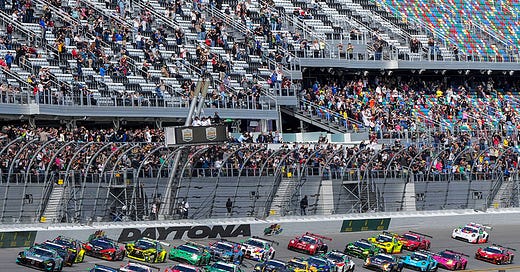Opinion: Does IMSA's GTD Pro and GTD Classes Need a Rethink?
John Dagys on what can be done to help clear up the sometimes confusing nature of GT3 racing in the IMSA WeatherTech SportsCar Championship...
The success of IMSA’s full adoption of the FIA GT3 regulations has been undeniable. With 32 GT3-spec cars, plus the adapted Chevrolet Corvette C8.R GTD, having taken part in last month’s IMSA WeatherTech SportsCar Championship season-opening Rolex 24 at Daytona, it marked one of the largest grids of GT3 machinery in a major endurance races outside of the 24 Hours of Spa.
Fans were treated to intense wheel-to-wheel action from the drop of the green flag. But those with a trained eye would have realized there were actually two races going on at once, between different classes, yet running under the same technical regulations.
In fact, a GTD class entry, the No. 27 The Heart of Racing Aston Martin Vantage GT3, comprised of a mandatory Pro-Am driver lineup, finished ahead of the GTD Pro-winning WeatherTech Racing Mercedes-AMG GT3 Evo in the race.
It came after GTD cars swept the front row in qualifying and were intermingled with the Pro class for nearly the entire around-the-clock enduro, offering a unique challenge for drivers and teams that were focused on winning their respective class that encountered other GT3 cars running to the same lap times.
When IMSA first introduced GTD Pro — as a replacement to the now-defunct GTLM class — at last year’s Rolex 24, it proved to be an instant hit. Who can forget the door-to-door battle between the Porsche 911 GT3 Rs from Mathieu Jaminet and Laurens Vanthoor duking it out to the finish in dramatic fashion?




